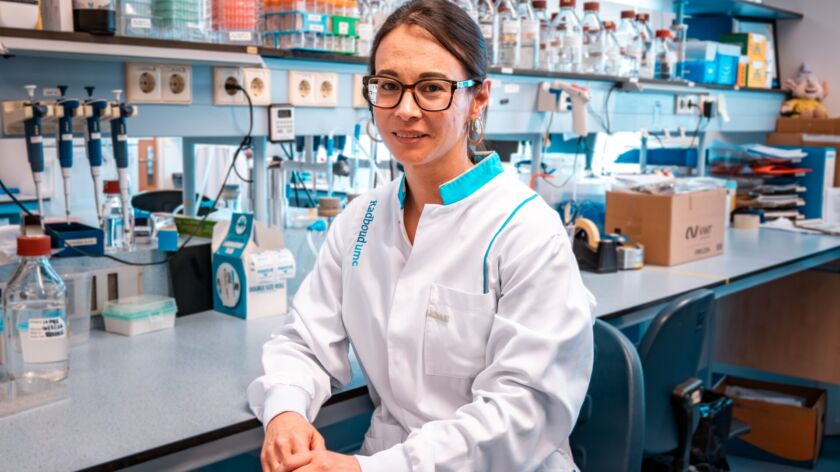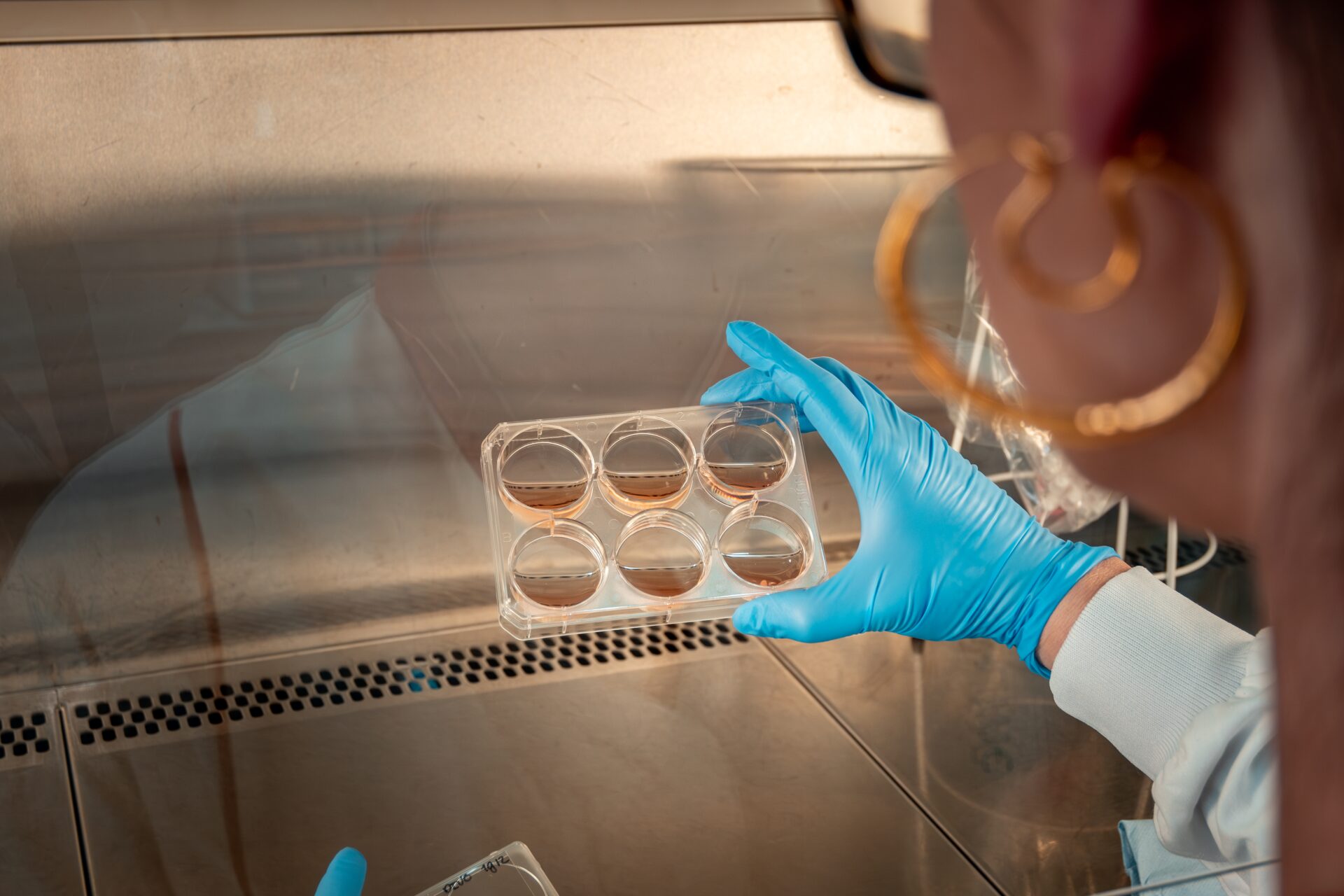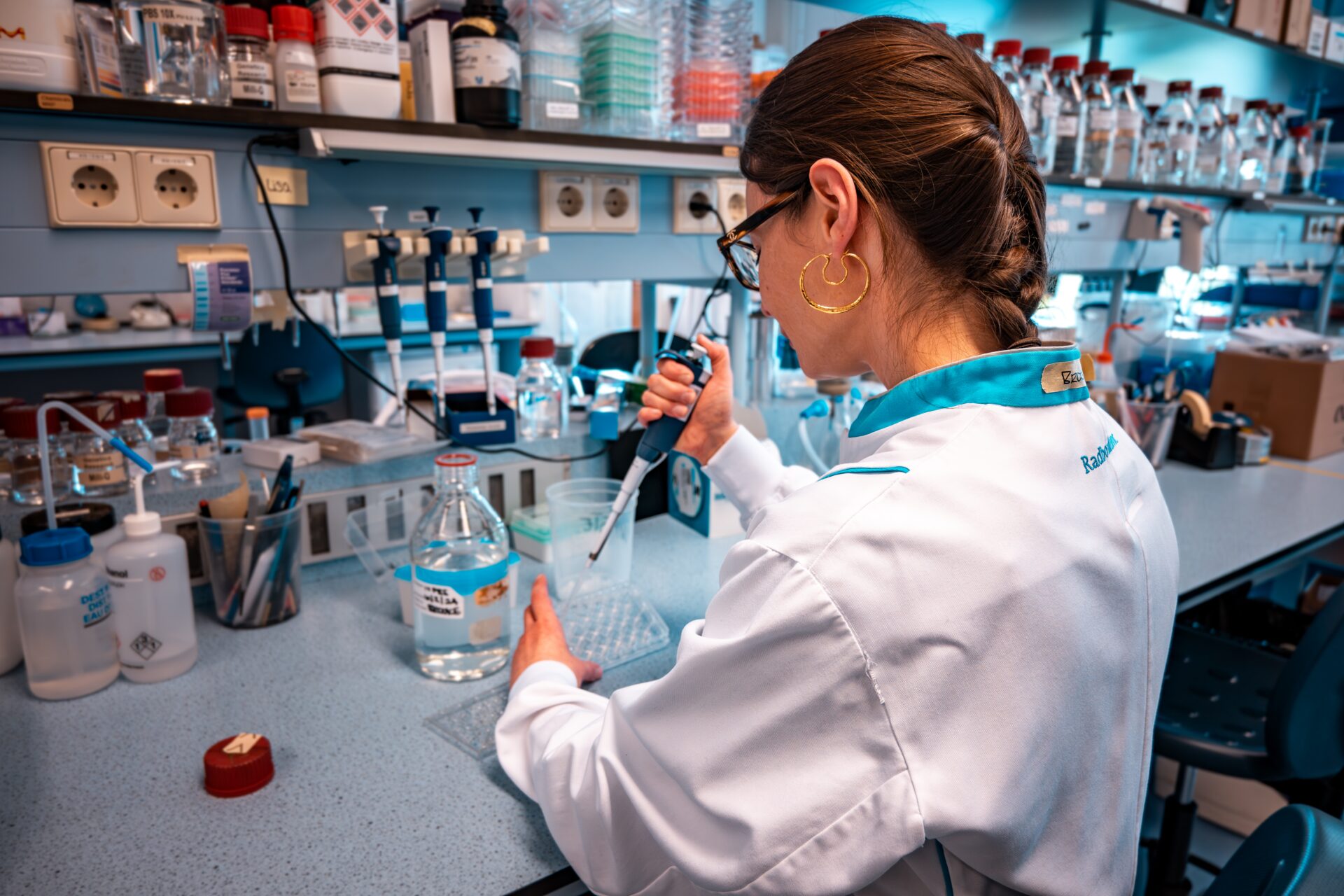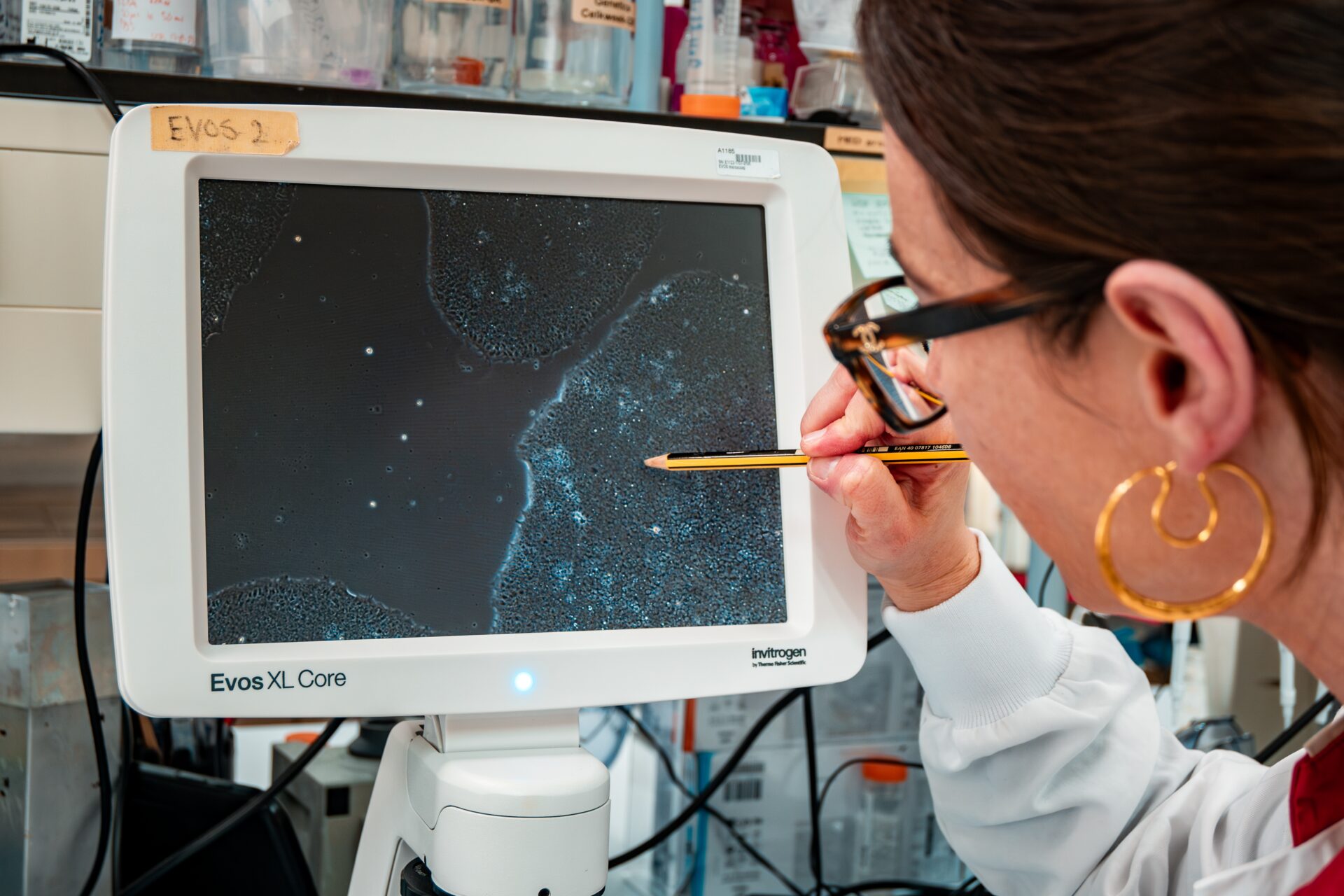Brain research in a petri dish? How brain organoids help neurodevelopmental disorder research
-
 Brooke Latour. Photo: Diede Van Der Vleuten.
Brooke Latour. Photo: Diede Van Der Vleuten.
Brains in a dish? That doesn’t sound too appetizing. But for researchers at Radboudumc, so-called brain organoids are instrumental for clinical research into rare genetic disorders like the Koolen-de Vries syndrome. ‘The knowledge that something could be done, I think that gave people a lot of hope.’
‘When you look into the dish you can really see them,’ says Brooke Latour, a postdoctoral researcher at Radboudumc. Latour is talking about small, white, and lab-grown lumps of human brain tissue which have received quite some attention in the neuroscience community – and for a good reason. The so-called cerebral organoids make great models for understanding the development of real human brains – and the points where that development might just go wrong.
Latour studies a genetic disorder called the Koolen-de Vries syndrome (KdVS) in the Human Genetics department together with David Koolen and Bert De Vries, who discovered KdVS in 2006. There is currently no effective treatment for KdVS as its development is largely unknown.

KdVS patients face life-long symptoms like speech and learning difficulties, a mild to moderate intellectual disability, and even epilepsy. Latour uses these ‘brains in a dish’ to research the molecular basis and the role of DNA replication in the atypical neurodevelopment in KdVS.
One of the hottest topics in neuroscience barely has the size of an apple seed. The scientific basis for Latour’s research was developed in 2013, when scientists used stem cells to create little human brains – well, not quite.
Stem cell research
Cerebral organoids are not actual brains. They are brain-like structures derived from stem cells. These immature cells are self-organizing and undergo a spatial temporal differentiation, meaning they become more specialized and more committed to their final cell type, in a matter that’s similar to what the actual brain does. ‘On day zero, we plate 9,000 stem cells into a V-shaped dish that they cannot attach to. And so, they attach to each other instead and form these spheroids (spherical cell clusters, ed.),’ explains Latour. ‘They can get as large as two millimeters when they’re over 100 days.’

As embryos, humans are made of stem cells which, under the influence of the right ‘cocktail’ of growth factors, become different cell types that make up our organs. For organoids, however, there is no need for an embryo. Adult skin cells collected from patients with KdVS, for instance, can be reprogrammed back into stem cells.
Gene mutation
Using a ‘growth cocktail’ similar to the one in a real developing brain, scientists can then turn the stem cells into neurons that have the same DNA as the patient. The neurons connect to each other and produce brain waves, mimicking the brain development of a premature baby. But why would you attempt to build a miniature reproduction of someone’s brain to begin with?
‘Humans have more neurons per cubic centimeter than any other animal’
‘I’m really looking at the very earliest stages of brain development, which is why the organoid model is perfect,’ says Latour. Hidden by a tough skull that is wrapped in other layers of protective tissue, the brain is difficult to access for researchers.
‘Humans have more neurons per cubic centimeter than any other animal. Having a more accurate model of human brain development answers questions that couldn’t be answered previously using animal models, for example,’ she says. KdVS is caused by a mutation in a gene called KANSL1. ‘What we actually found in the case of the KANSL1 mutation is that the cells replicate their DNA a lot more slowly. And initially we weren’t sure what that could possibly mean.’
Leiden
A group in Leiden that studies DNA damage found something similar. ‘They contacted us and asked if we would like to collaborate.’ That is how the research project on the molecular basis of KdVS proceeded. When the neural stem cells multiply in order to form the brain, the DNA must be copied so that each cell contains it. In KdVS patients, this DNA copying is more complicated – there are obstacles along the way.

‘So far, we think that this delayed replication of the DNA is due to unresolved blockages on the DNA, so when the machinery is trying to move along and replicate the DNA, it just gets stuck because of an obstacle. This information might give us an idea whether solving this blockage might make a difference in the long-term development of these brain organoids and if that affects the DNA’.
This knowledge could potentially also explain how other genetic mutations that determine delayed DNA replication result in neurodevelopmental disorders. This gives insight into aspects that could be targeted with treatment.
Impact
‘Our research is really connected to the clinic,’ Latour emphasizes. The clear goal is to improve the quality of life for the patients with KdVS and their families, according to the researcher. ‘When working with patients, one of the things I was worried about was unrealistic expectations, being asked something like when will my child be cured? But these families are very educated on the topic and just want to know about the research. The knowledge that something could be done, I think that gave people a lot of hope.’
‘The knowledge that something could be done, I think that gave people a lot of hope’
There are even some parents who are currently funding a project for a PhD student co-supervised by Latour at Radboudumc. Their daughter has KdVS. Latour: ‘When they gave us the money for the project, which has been running for a year now, they told us: if it could even amount to something very specific, small, that in the lifetime of our daughter would make a small difference, we would be grateful.’ And according to the researcher, that kind of inspiring edge can just make the difference.



